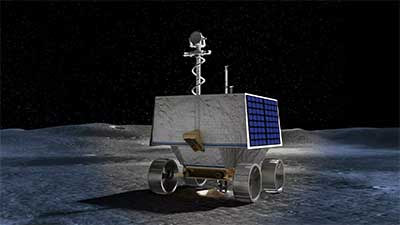VIPER Lunar Rover
Volatiles Investigating Polar Exploration Rover (VIPER) is a rover of NASA which will land at the Moon’s South Pole, near the western edge of the Nobile Crater. The Moon’s South Pole is one of the coldest areas in our solar system, with no prior lunar missions having explored the region. Thats why the National Aeronautics and Space Administration’s (NASA) is planning for this mission.
VIPER, a part of the Artemis mission, is expected to launch by late 2023. The mission aims to map and explore the South Pole’s surface and subsurface for water and other resources.
According to NASA , VIPER is a mobile robot that will go to the South Pole of the Moon to get a close-up view of the location and concentration of water ice that could eventually be harvested to sustain human exploration on the Moon, Mars — and beyond. VIPER represents the first resource mapping mission on another celestial body.
NASA will use the data the rover collects to show where the Moon’s water ice is most likely to be found and easiest to access, making VIPER the first-ever resource mapping mission on another celestial body. The first water maps of the Moon will mark a critical step forward in NASA’s Artemis program to establish a sustainable human presence on the surface of the Moon by 2028.
Key Facts About NASA’s VIPER Mission
Launch: Late 2023
Landing site: South Pole of the Moon
Delivery to the Moon: Launch vehicle and lander provided by a NASA Commercial Lunar Payload Services partner
Mission duration: 100 Earth days, covering 3 cycles of lunar day and night
Distance goal: 12 miles (20 kilometers)
Rover size: Similar to a golf cart: 5 feet by 5 feet by 8 feet (1.5 meters by 1.5 meters by 2.5 meters) and 950 pounds (430 kilograms)
Onboard instruments: 3 spectrometers and a 3.28-foot (1-meter) drill
Power: Solar-charged battery, peak power of 450 watts
Top speed: 0.5 mph (0.8 kph)
Communications: X-band direct-to-Earth (no relay) over the Deep Space Network.







